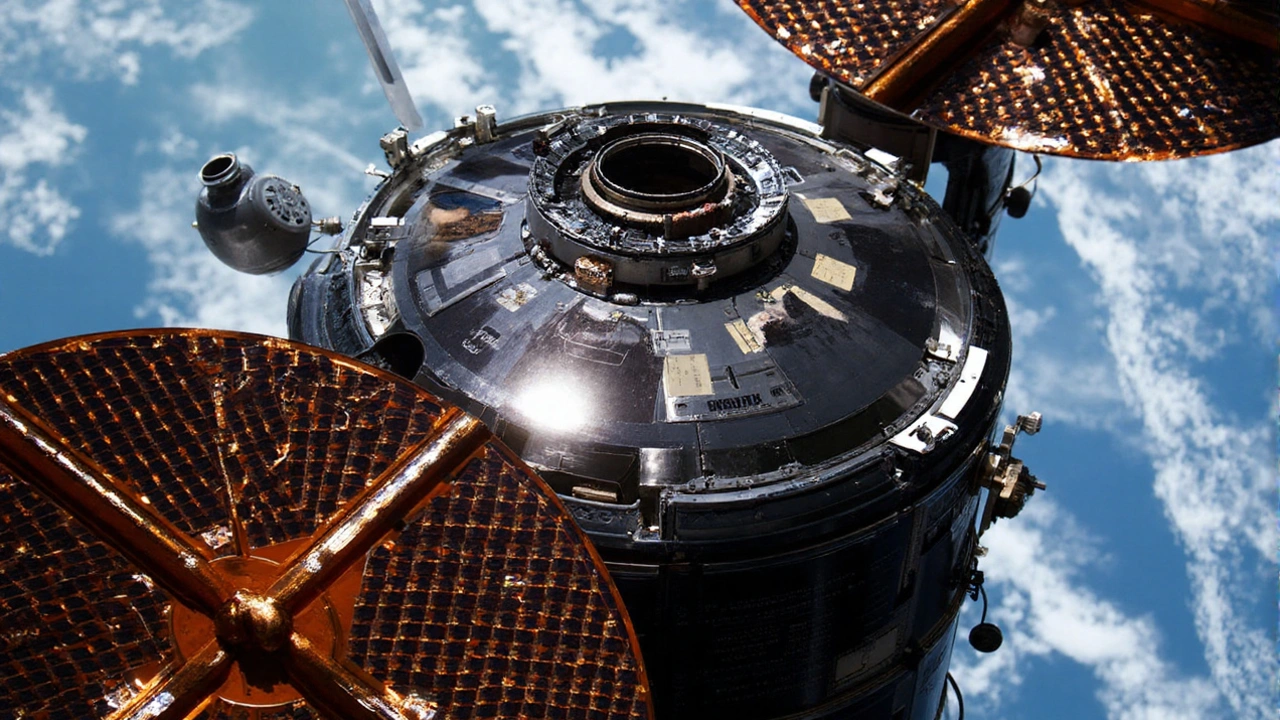Engine hiccup and the quick fix
When the Cygnus XL lifted off on Sep 14 aboard a Falcon 9, we all expected a smooth ride to the orbital lab. The launch went off without a hitch, the solar arrays unfurled, and the spacecraft settled into its initial orbit. Then, on Sep 16, the main engine that was supposed to fire twice to raise the vehicle’s altitude shut down early.
Flight controllers at NASA and Northrop Grumman stared at the telemetry and saw a safety flag pop up. The culprit? An overly cautious software limit that told the engine to quit before it finished the burn. It wasn’t a hardware failure—just a protective trigger that acted a little too quickly.
Within minutes, engineers were crunching numbers, swapping out burn durations, and drafting a new rendezvous sequence. The revised plan added a longer, lower‑thrust burn later that day, buying the spacecraft the extra time it needed to climb to the proper altitude. The team confirmed that all other systems—power, communications, attitude control—were still green, so they pushed ahead.
That decision cost the mission a 24‑hour slip. Instead of docking on Sep 17 as scheduled, the Cygnus XL arrived on Sep 18. The delay was a reminder that even with decades of experience, spaceflight still hinges on the ability to adapt in real time.
Mission payload, docking, and what comes next
When the ISS passed over Africa on Sep 18, astronaut Jonny Kim extended the Canadarm2 and gently grappled the **Cygnus XL**. Zena Cardman was on standby, ready to assist if anything went sideways. Within a few minutes, the spacecraft was secured and berthed to the Unity module’s Earth‑facing port.
The extra‑large version of the Cygnus can carry more than any of its predecessors. This flight stowed roughly 11,000 lb (about 5 tons) of cargo, broken down into several categories:
- Food and water for the seven‑person crew, stretching their supply horizon by weeks.
- Science kits ranging from protein crystal growth experiments to new microgravity combustion studies.
- Spare parts for life‑support gear, including a replacement flush‑system component for the station’s toilet.
- Hardware upgrades for the station’s power and air‑filtration units.
Beyond the tangible goods, the mission carried a symbolic flag. Northrop Grumman named the capsule the S.S. Willie McCool, honoring the shuttle pilot who perished in the Columbia disaster. It’s a nod to the people who paved the way for today’s commercial resupply era.
This was the 23rd CRS (Commercial Resupply Services) flight for Northrop Grumman, a partnership that began when the company bought Orbital ATK in 2018. The resupply market now has four active players: Northrop Grumman’s Cygnus, SpaceX’s Dragon, Russia’s Progress, and Japan’s HTV‑X, which is slated to return later this year. The Russian Progress docked just a week earlier, delivering 2.8 tons of cargo, underscoring how a multi‑vendor approach keeps the ISS humming.
After the hatch was opened, the crew began transferring supplies, installing the new experiments, and routing spare parts to the appropriate workstations. The Cygnus will stay attached until March 2026, essentially acting as a floating storage locker. When it’s finally filled with trash and decommissioned hardware, a controlled re‑entry will let it burn up in the atmosphere, safely disposing of waste.
What does this episode teach us? First, that software settings designed to keep a spacecraft safe can also cause unexpected delays. Second, the collaboration between NASA and its commercial partners is agile enough to absorb setbacks without jeopardizing the station’s operations. And finally, the continued expansion of the Cygnus XL’s cargo capacity means future missions can bring even more science and support to the orbiting outpost.
With the ISS slated to operate into the late 2020s, and private stations on the horizon, reliable resupply will stay a cornerstone of low‑Earth‑orbit activity. The Cygnus XL’s successful recovery from an engine glitch is a small but significant proof point that the commercial model can deliver, adapt, and keep the research community moving forward.






Liz Lessner
September 23, 2025 AT 04:46Wow, that was a close call but the team pulled it off! It’s great to see everyone stay calm and adapt-teh engineers really knw their stuff.
Chance Remien
September 23, 2025 AT 07:00The engine hiccup on Cygnus XL serves as a textbook example of how software safety margins can unintentionally become mission constraints. While the hardware performed flawlessly, the premature cutoff illustrates the delicate balance between protecting assets and preserving schedule. In many engineering disciplines, we accept that a system will occasionally err on the side of caution, yet this case shows that even well‑intentioned safeguards can ripple into operational delays. The quick recalculation of burn profiles by the flight dynamics team underscores the value of maintaining a flexible mission architecture. By opting for a longer, lower‑thrust burn later in the flight, they effectively reclaimed the altitude budget without compromising crew safety. This decision also highlights the importance of having robust contingency procedures baked into flight plans from day one. Moreover, the 24‑hour slip, though inconvenient, did not jeopardize the ISS’s overall logistics chain because the resupply ecosystem is deliberately redundant. With Progress, Dragon, and HTV‑X all operating in parallel, a single delay can be absorbed without critical impact. From a philosophical standpoint, the incident reminds us that certainty is an illusion in the realm of spaceflight; we must always expect the unexpected. It also demonstrates how human ingenuity can turn a problem into a learning opportunity, reinforcing the iterative nature of technological progress. The naming of the capsule after Willie McCool adds an emotional layer, honoring past sacrifices while looking forward to future achievements. Such symbolic gestures help maintain continuity and morale across generations of engineers and astronauts. As commercial partners continue to mature, we can anticipate even greater payload capacities and more autonomous fault‑management capabilities. Ultimately, the episode is a modest but potent proof that the commercial model can adapt, survive, and keep the scientific agenda moving. It encourages us to keep investing in both hardware robustness and software agility as we push toward deeper exploration.
Arjun Dode
September 23, 2025 AT 09:13Yo, that fix was slick! The guys on the ground switched up the burn plan in real time and got Cygnus up there without a hitch. Shows how fast‑moving the whole resupply game is, and why we need that kind of energy on every mission. Big props to the team for not letting a tiny glitch mess up the crew’s food and experiments.
Anna Lee
September 23, 2025 AT 11:26Absolutely!!! That analysis hits the nail on the head;; it’s so true that we need both safety and flexibility!!! The way they re‑planned the burn was super smart,, and it really shows how much trust we can have in these commercial crews!!
Mayank Mishra
September 23, 2025 AT 13:40Listen, it’s not just “teh engineers” who need credit-every single person from the software devs to the flight controllers had to step up, and they did. If you’re gonna call it a “close call,” remember the stakes: one mis‑step could've left the ISS short on essentials. So give the whole crew the respect they earned, not just a casual pat‑on‑the‑back.
Daniel Craine
September 23, 2025 AT 15:53Another typical “heroics” post-yeah, they fixed a glitch, big deal. The real issue is that we keep relying on these patch‑jobs instead of building truly reliable systems!!! If we keep patching, we’re just delaying the inevitable.